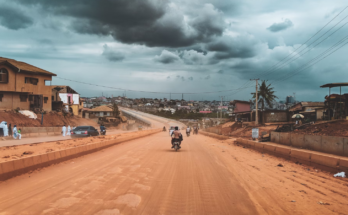Solomon Owa’s fingers work quickly as he speaks over the hum of his sewing machine. That’s because the hum of his sewing machine might stop at any moment. “In a few minutes, the power will go,” he said. The 51-year-old runs a tailoring business from his garage in Johannesburg. Outages leave him idle for up to 10 hours a day. Surrounded by piles of colorful material, he needs to work while he can.
It’s a rush that South Africans have begrudgingly become accustomed to as they’re forced to use more and more ingenuity to navigate daily life: Charge devices, take a shower before the hot water goes off and leave the house before the traffic lights go out. Schools, hospitals, restaurants and businesses rely on backup generators to keep running. Homeless people guide vehicles through potholed streets for cash.
The continent’s richest city was built on gold, but it’s now defined by chaos, crime and corruption more than ever. It encapsulates the wider collapse of basic services across South Africa. From a broken railway network disrupting trade to archaic sanitation that triggered a recent cholera outbreak near the capital, Pretoria, parts of the country increasingly look like a failing state.



